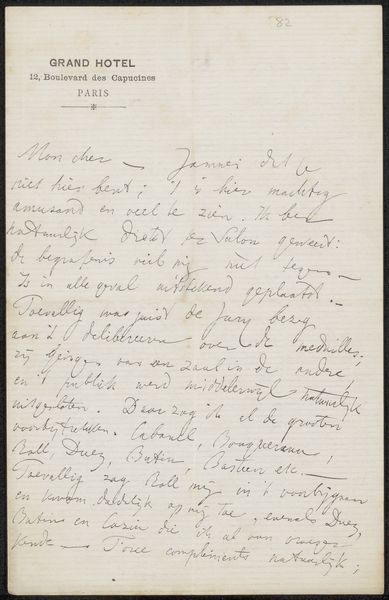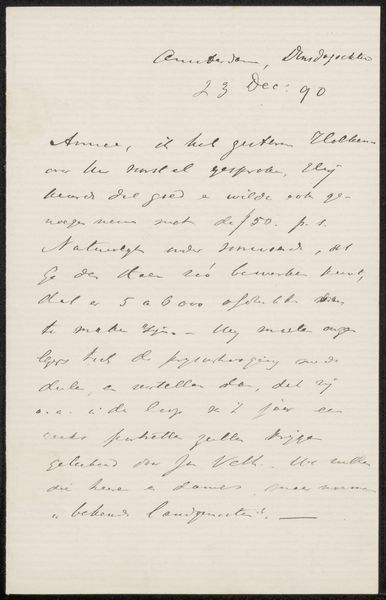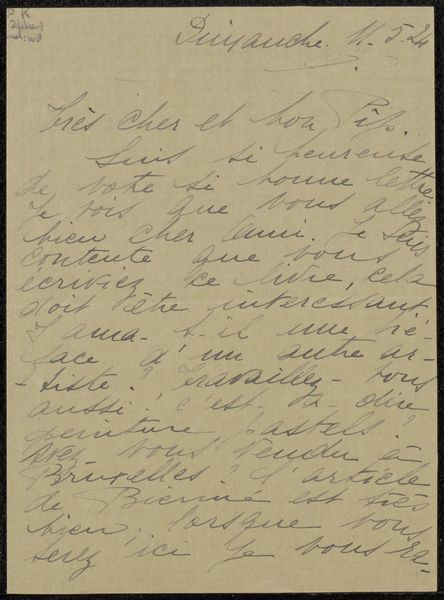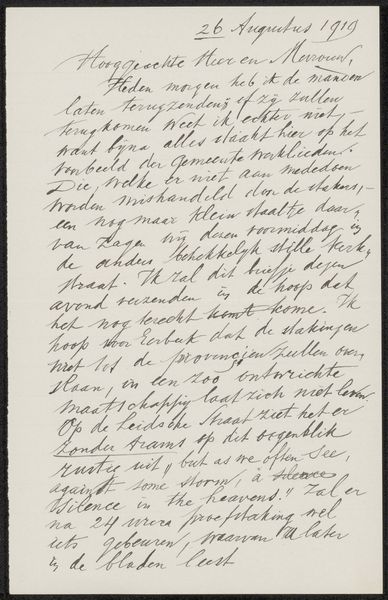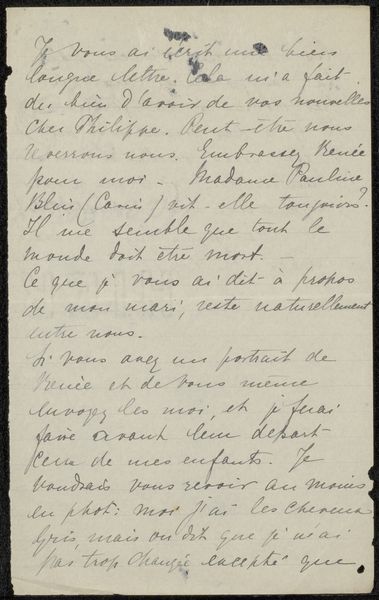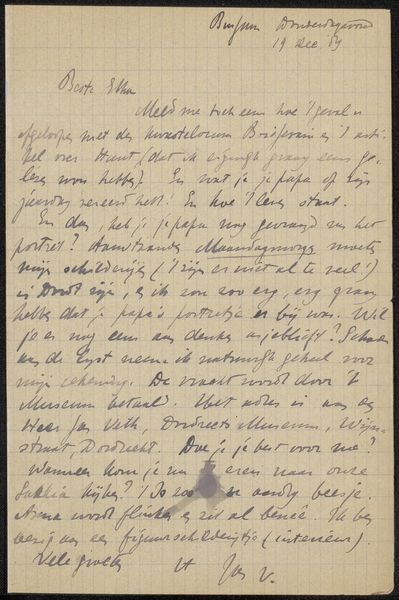
drawing, paper, ink, pen
#
drawing
#
hand-lettering
#
hand drawn type
#
hand lettering
#
paper
#
personal sketchbook
#
ink
#
hand-drawn typeface
#
fading type
#
ink colored
#
pen work
#
sketchbook drawing
#
pen
#
sketchbook art
Copyright: Rijks Museum: Open Domain
Curator: This is "Brief aan Philip Zilcken" by Dagmar Frandsen, likely created between 1927 and 1929. It's an ink drawing on paper. Editor: The script has such presence. Even without understanding the language, the density and flow of the ink feels intimate and focused. It resembles a kind of feverish meditation made visible. Curator: Precisely. Frandsen's use of personal correspondence transforms what could be seen as mundane—a simple letter—into a site where social connections are performed, constructed and reflected upon. Consider the gendered aspect of letter-writing at this time, too. Editor: You can see the hand, the labor in it. Each stroke has deliberate intention and force, especially when looking closely at its texture and considering what tools were employed to deliver this sort of communication so artfully. What type of nib did she use, and how might its manufacturing be part of the story? Curator: Those questions are vital! The hand-lettering trended at the time and offers a window into understanding design, personal identity, and the ways Frandsen positions herself within specific creative circles of the period. The letter isn’t only about the text—it is about her artistry and expression through a common, intimate medium. Editor: It gives so much character. Each imperfect curve in the typeface gives insight into Frandsen. One almost expects the ink to still be wet on the page, giving a haptic element to its visual appeal. Curator: Right. The blurring of text as art really calls into question traditional definitions of ‘high’ and ‘low’ art. It allows us to consider accessibility and who can or cannot participate in its creation, critique and cultural conversation. Editor: Considering how easy we spread words today, something this focused asks for time and consideration to value each moment. The physical presence makes you want to respond in kind. Curator: Exactly! Examining this ‘brief’ exchange reveals much more than its linguistic purpose might suggest, echoing complexities regarding social interaction. Editor: I now consider the time, touch, and materiality of its assembly alongside its lasting visual trace of someone wanting to share.
Comments
No comments
Be the first to comment and join the conversation on the ultimate creative platform.

